Introduction
In a Cisco SD-WAN fabric, transport resiliency and efficient use of transports are critical for delivering reliable connectivity. Each WAN Edge in the fabric typically connects to one transport network, like MPLS, Internet, 4G/5G, etc. The unique logical combination of System-ip + Color + Encapsulation result in what are known as Transport Locators (TLOCs).
However, on dual router scenarios, not every branch site has the luxury of multiple WAN circuits connected to a single router. In some cases, one WAN circuit may be terminated on one router, while another circuit is only available on a second router. This is where TLOC Extension comes in, allowing one router to leverage the transport connection of another router in the same site, increasing tunnel redundancy and flexibility.
Let’s explore it in more detail.
What is TLOC Extension?
TLOC Extension in Cisco SD-WAN enables a router to use the transport interface of another router as if it were its own. This is done by extending the TLOC (Transport Locator) from one router to another through a Layer 2 or Layer 3 connection. The physical representation looks like this:
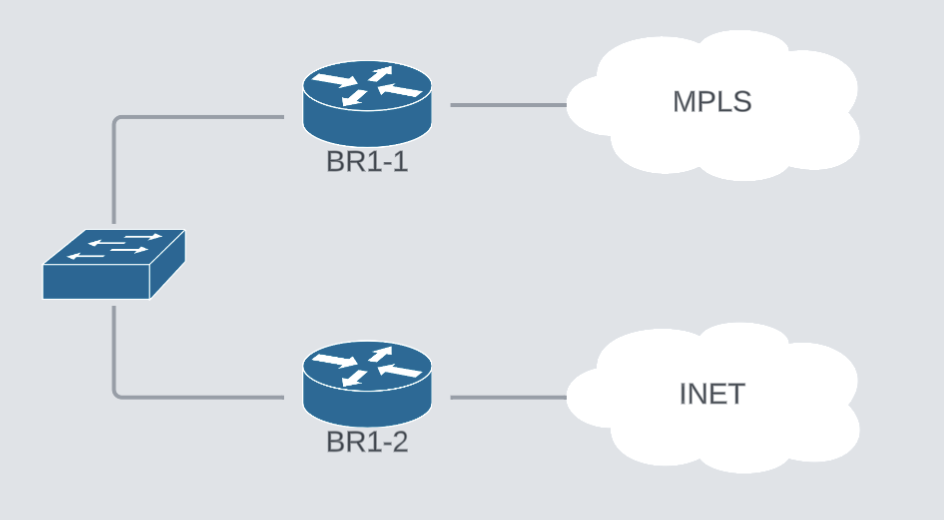
In practice, this means Router A can leverage Router B’s transport circuits (for example, MPLS or Internet) without being directly connected to them, and vice versa. This mechanism ensures that all routers at the site can fully use all the available transports in the SD-WAN fabric, even if they don’t have their own dedicated transport connections. The logical picture is something like this:
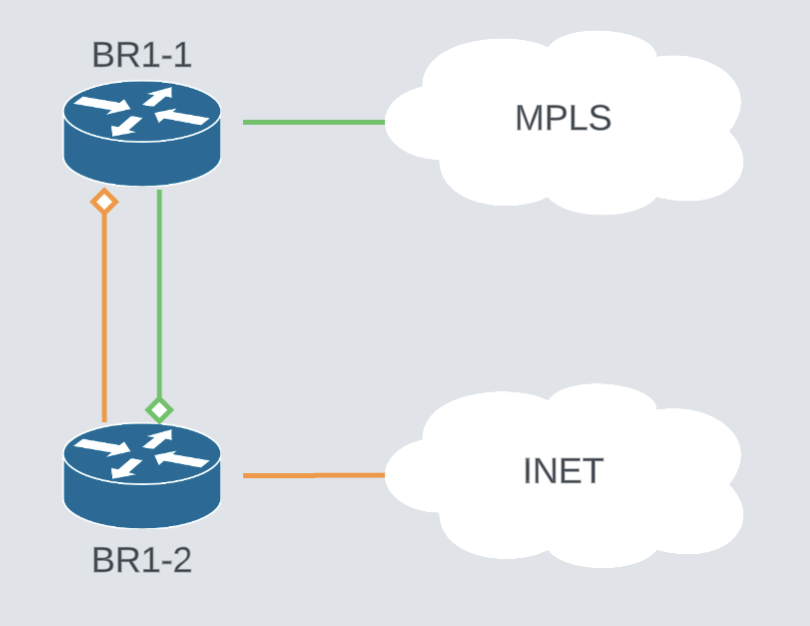
BR1-1 can now use INET as transport and BR1-2 can use MPLS as an available transport as well.
Some of the advantages of using TLOC extension:
- It reduces the direct number of circuits you need per router.
- It provides resiliency at the site level.
- It simplifies deployments in branch offices where only one transport circuit is physically available.
Use Cases
TLOC Extension addresses real-world challenges in SD-WAN deployments. Some common use cases include:
Small Branch Sites with Limited Connectivity
A branch may only have a single Internet or MPLS link. With TLOC Extension, two routers can still operate with redundancy by sharing that single transport.
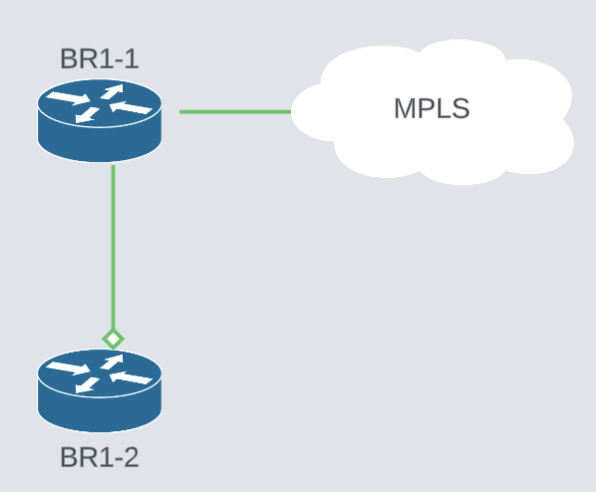
Cost Optimization
Instead of purchasing multiple circuits for each router, costs can be reduced by having one circuit per transport type and sharing it across routers.
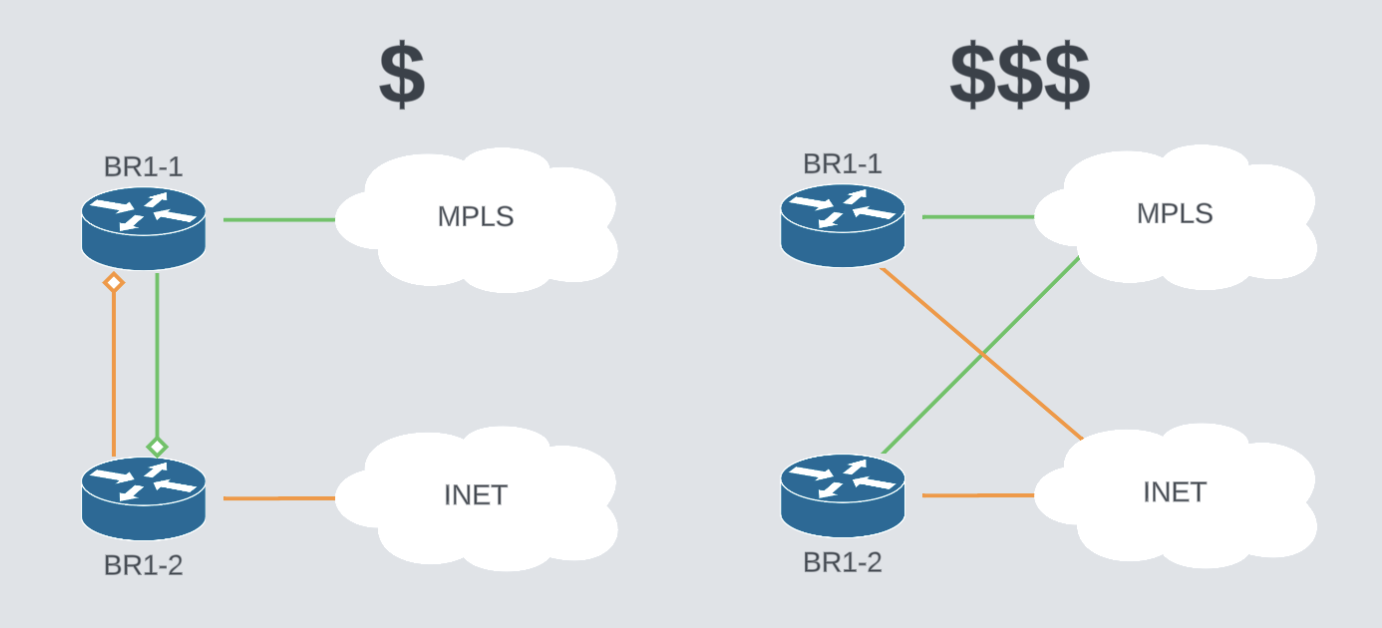
Transport Redundancy
When a site has different transport types split across different routers (Example: Internet on Router A, MPLS on Router B), TLOC Extension ensures both routers can access both transport types.

Architecture and How it Works
A TLOC is defined by three elements:
- System IP of the router
- Color (which transport type the link belongs to, e.g., public-internet, mpls, lte)
- Encapsulation (IPsec/GRE)
With TLOC Extension, one router establishes an internal tunnel across the LAN to another router, allowing it to advertise and use that TLOC.
Key points about the architecture:
- A TLOC extension is built over a physical LAN interface between the two routers, sub-interfaces and dot1Q encapsulations are commonly used.
- The “donor” router provides access to its transport interface.
- The “receiver” router can then form control and data plane connections using that transport.
From a fabric perspective, both routers appear as if they were independently connected to the transport cloud.
Configuring TLOC Extension
I will take advantage of the UX 2.0 guided workflows to quickly generate a configuration for a dual-router site with TLOC extension and we’ll examine it.
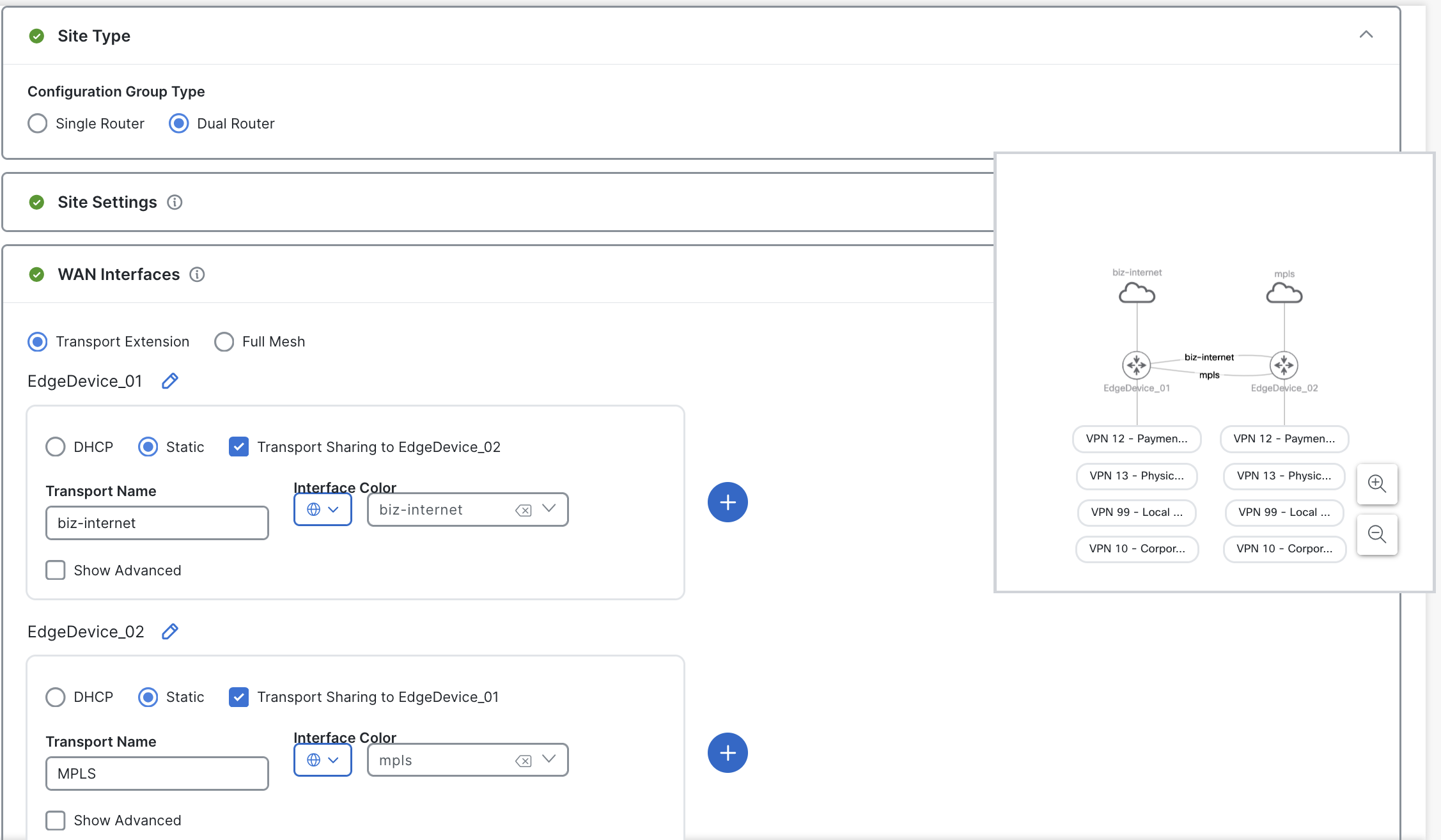
The resulting configuration has the following interfaces on the Transport Feature Profile.
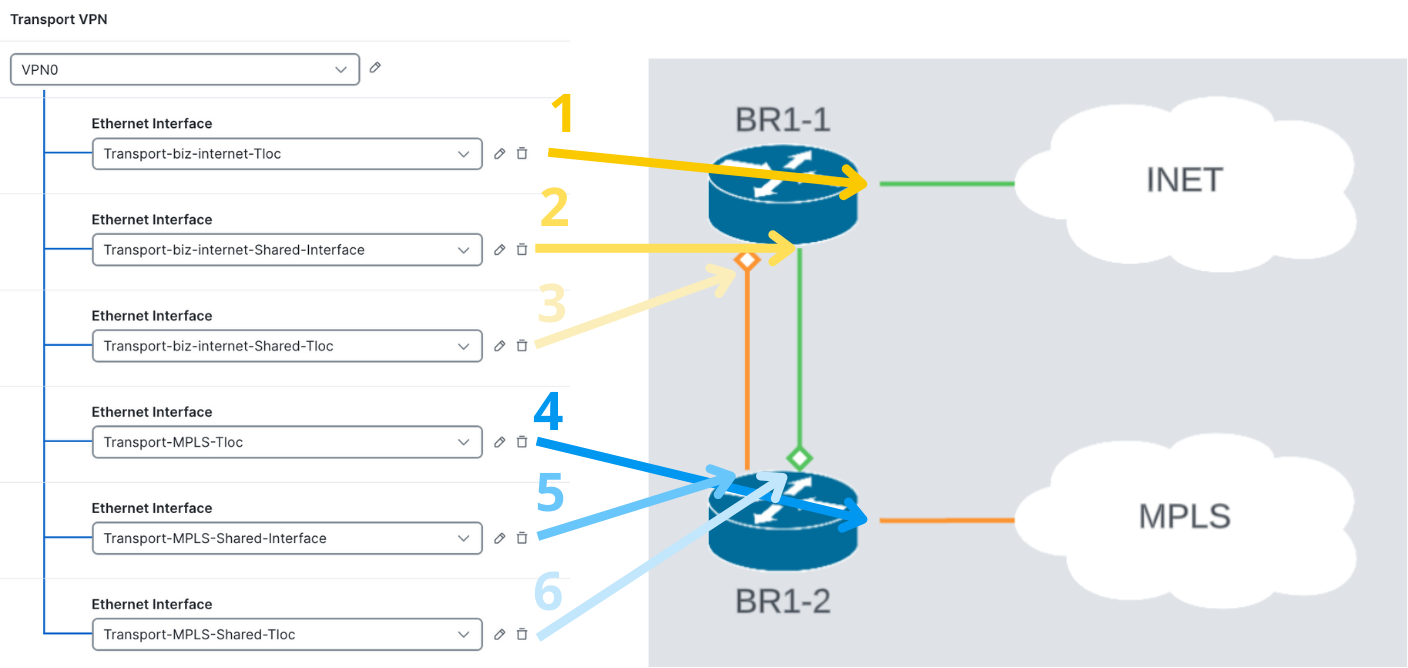
Six different interfaces were created, let’s examine three of them to understand how TLOC extension is configured.
Note I needed to remove some unneeded NAT on some of those interfaces, aside from this, configuration was ready.
Interface #1 - Internet TLOC on BR1-1
The first interface connect directly to the Internet Transport, standard interface and TLOC configuration.
interface GigabitEthernet1
description WAN Interface - biz-internet
ip address 31.11.0.2 255.255.255.252
ip nat outside
sdwan
interface GigabitEthernet1
tunnel-interface
encapsulation ipsec weight 1
color biz-internet
Interface #2 - BR1-1´s “Donated” interface to BR1-2
The second interface is needed to extend Internet TLOC to BR1-2, it needs an ip address and BR1-2 will use it as a default gateway.
interface GigabitEthernet4
description WAN Interface - biz-internet
ip address 172.17.1.6 255.255.255.252
sdwan
interface GigabitEthernet4
tloc-extension GigabitEthernet1
exit
Interface #6 - Extended Internet TLOC on BR1-2
This is a normal TLOC configuration that will use BR1-1’s IP address as default gateway for the biz-internet transport.
interface GigabitEthernet5
description WAN VPN 0 Interface - biz-internet
ip address 172.17.1.5 255.255.255.252
!
ip route 0.0.0.0 0.0.0.0 172.17.1.6
sdwan
interface GigabitEthernet5
tunnel-interface
encapsulation ipsec weight 1
color biz-internet
The subnet 172.17.4.0/30 needs to be advertised on the MPLS underlay. Typically, BGP is used to do this advertisement.
The configuration of interfaces 3,4 and 5 are a mirror of what we just saw.
Validation
Once this configuration is in place, we can validate our control and data plane:
On BR1-1, notice that I have two different SD-WAN interfaces, Gig1 and Gig5
Lisbon_10-1#show sdwan control local-properties
personality vedge
sp-organization-name MYSDWAN-LAB123
organization-name MYSDWAN-LAB123
root-ca-chain-status Installed
root-ca-crl-status Not-Installed
...
PUBLIC PUBLIC PRIVATE PRIVATE PRIVATE MAX RESTRICT/ LAST SPI TIME NAT VM BIND
INTERFACE IPv4 PORT IPv4 IPv6 PORT VS/VM COLOR STATE CNTRL CONTROL/ LR/LB CONNECTION REMAINING TYPE CON REG INTERFACE
STUN PRF IDs
-----------------------------------------------------------------------------------------------------------------------------------------------------------------------------------------------------------------------------------------
GigabitEthernet1 31.11.0.2 12386 31.11.0.2 :: 12386 1/1 biz-internet up 2 no/yes/no No/No 0:00:00:10 0:03:06:00 N 5 Default N/A
GigabitEthernet5 172.17.1.5 12426 172.17.1.5 :: 12426 1/0 mpls up 2 no/yes/no No/No 0:00:00:15 0:04:19:53 N 5 Default N/A
Control connections work on both transports as expected
Lisbon_10-1#show sdwan control connections
PEER PEER CONTROLLER
PEER PEER PEER SITE DOMAIN PEER PRIV PEER PUB GROUP
TYPE PROT SYSTEM IP ID ID PRIVATE IP PORT PUBLIC IP PORT ORGANIZATION LOCAL COLOR PROXY STATE UPTIME ID
----------------------------------------------------------------------------------------------------------------------------------------------------------------------------------------
vsmart dtls 1.0.0.3 999 1 10.1.0.4 12446 10.1.0.4 12446 MYSDWAN-LAB123 biz-internet No up 0:20:59:37 0
vsmart dtls 1.0.0.3 999 1 10.1.0.4 12446 10.1.0.4 12446 MYSDWAN-LAB123 mpls No up 0:07:45:45 0
vbond dtls 0.0.0.0 0 0 10.1.0.3 12346 10.1.0.3 12346 MYSDWAN-LAB123 biz-internet - up 0:20:59:38 0
vbond dtls 0.0.0.0 0 0 10.1.0.3 12346 10.1.0.3 12346 MYSDWAN-LAB123 mpls - up 0:07:48:46 0
vmanage dtls 1.0.0.1 999 0 10.1.0.1 12646 10.1.0.1 12646 MYSDWAN-LAB123 biz-internet No up 0:20:59:38 0
My data plane also established using MPLS and Biz-internet
Lisbon_10-1#sh sdwan bfd sessions
SOURCE TLOC REMOTE TLOC DST PUBLIC DST PUBLIC DETECT TX
SYSTEM IP SITE ID STATE COLOR COLOR SOURCE IP IP PORT ENCAP MULTIPLIER INTERVAL(msec UPTIME TRANSITIONS
-----------------------------------------------------------------------------------------------------------------------------------------------------------------------------------------------------------------------------------------------------
1.1.20.1 20 up biz-internet mpls 31.11.0.2 21.21.0.2 12346 ipsec 7 1000 0:07:48:41 0
1.1.20.2 20 up biz-internet mpls 31.11.0.2 21.22.0.2 12346 ipsec 7 1000 0:07:48:41 0
1.1.200.1 200 up biz-internet mpls 31.11.0.2 21.201.0.2 12346 ipsec 7 1000 0:21:01:36 1
1.1.200.2 200 up biz-internet mpls 31.11.0.2 21.202.0.2 12346 ipsec 7 1000 0:21:01:36 1
...
1.1.20.1 20 up mpls mpls 172.17.1.5 21.21.0.2 12346 ipsec 7 1000 0:07:47:43 0
1.1.20.2 20 up mpls mpls 172.17.1.5 21.22.0.2 12346 ipsec 7 1000 0:07:47:43 0
1.1.200.1 200 up mpls mpls 172.17.1.5 21.201.0.2 12346 ipsec 7 1000 0:07:47:43 0
1.1.200.2 200 up mpls mpls 172.17.1.5 21.202.0.2 12346 ipsec 7 1000 0:07:47:43 0
Considerations
When deploying TLOC Extension, consider the following:
Use Direct Connections Where Possible
A direct cable between routers is preferred over a shared switch to minimize failure points.
Use sub-interfaces if there aren’t enough interfaces
In situations where devices don’t have available ports, you can always do layer 2 TLOCs using sub-interfaces, just be mindful of the available bandwidth as the throughput will be shared.
Plan for Redundancy
Critical sites are better off with direct connections to available transports. TLOC extensions will help extend transports, but will not protect in case of device failures.
Advertise TLOC extension subnets
To provide your private tloc extensions with connectivity, the local subnet must be reachable on the private transport. You can use BGP, static or any other routing means to achieve it.
Avoid Overloading the LAN Link
The link between routers should be sized appropriately, as all extended traffic will traverse it.
Layer 3 TLOC Extension
Tlox Extension can be configured as layer 3 and GRE encapsulation. This is especially useful when two devices don’t have a direct layer 2 adjacency.
Conclusion
TLOC Extension is a powerful feature in Cisco SD-WAN that enhances flexibility and resiliency at branch sites. By allowing routers to share transport connections, it optimizes resource usage, lowers costs, and ensures that all routers can fully participate in the SD-WAN fabric, even when dedicated WAN links are limited.
Proper planning, redundancy, and monitoring are essential to get the most value out of this feature. When implemented correctly, TLOC Extension can significantly improve the robustness and cost-effectiveness of an SD-WAN deployment.
👉 Stay tuned for the next blog, where we’ll continue exploring practical ways to strengthen and optimize your Cisco SD-WAN design